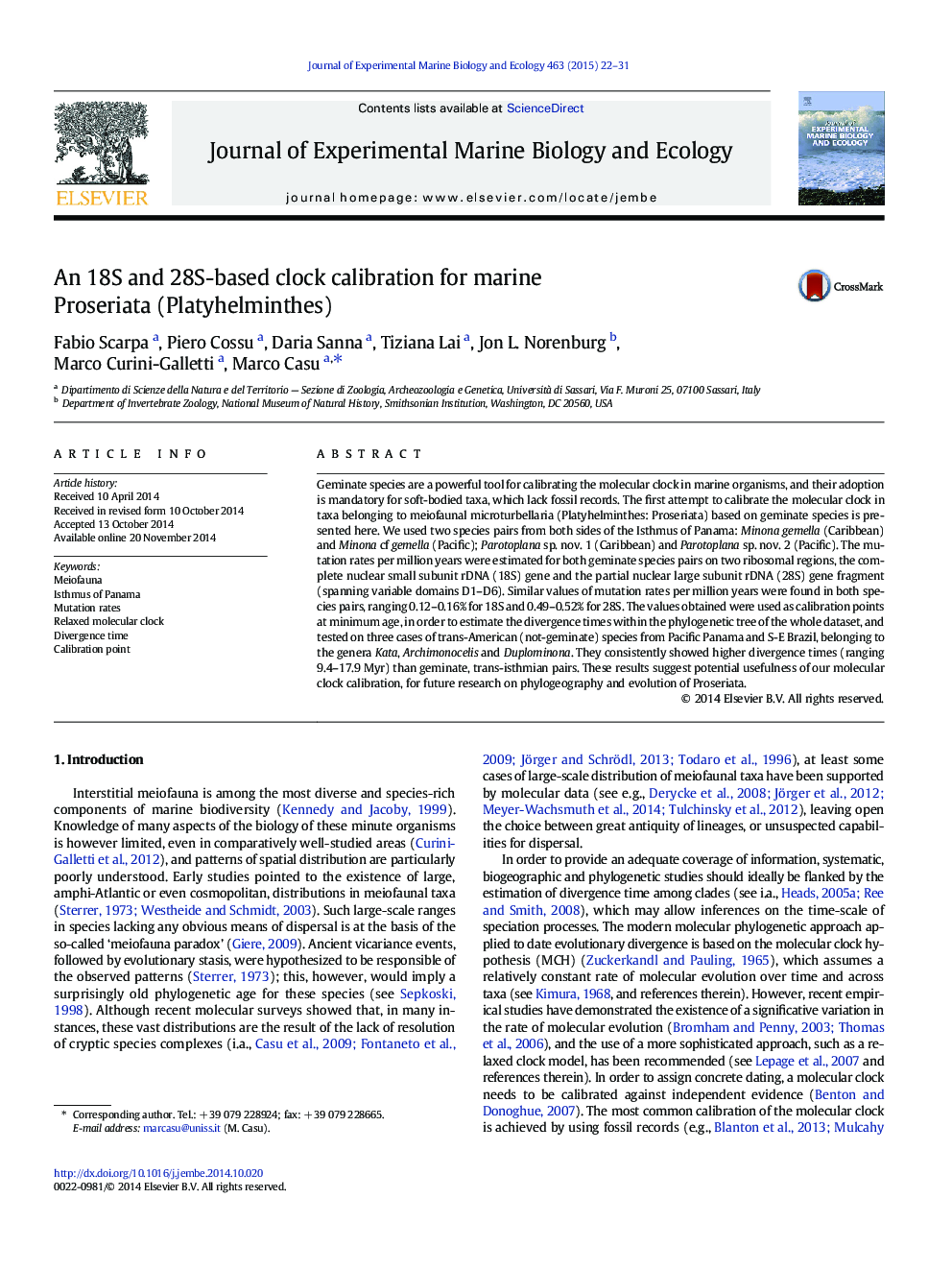| کد مقاله | کد نشریه | سال انتشار | مقاله انگلیسی | نسخه تمام متن |
|---|---|---|---|---|
| 4395483 | 1618412 | 2015 | 10 صفحه PDF | دانلود رایگان |

• Calibrating molecular clock using geminate species from the Isthmus of Panama.
• Calibration points for dating at the minimum age.
• Mutation rates per million years estimated by means of geminate species.
• Divergence time between trans-American Proseriata species pairs.
• Dating allows further insights into the phylogeny and evolution of Proseriata.
Geminate species are a powerful tool for calibrating the molecular clock in marine organisms, and their adoption is mandatory for soft-bodied taxa, which lack fossil records. The first attempt to calibrate the molecular clock in taxa belonging to meiofaunal microturbellaria (Platyhelminthes: Proseriata) based on geminate species is presented here. We used two species pairs from both sides of the Isthmus of Panama: Minona gemella (Caribbean) and Minona cf gemella (Pacific); Parotoplana sp. nov. 1 (Caribbean) and Parotoplana sp. nov. 2 (Pacific). The mutation rates per million years were estimated for both geminate species pairs on two ribosomal regions, the complete nuclear small subunit rDNA (18S) gene and the partial nuclear large subunit rDNA (28S) gene fragment (spanning variable domains D1–D6). Similar values of mutation rates per million years were found in both species pairs, ranging 0.12–0.16% for 18S and 0.49–0.52% for 28S. The values obtained were used as calibration points at minimum age, in order to estimate the divergence times within the phylogenetic tree of the whole dataset, and tested on three cases of trans-American (not-geminate) species from Pacific Panama and S-E Brazil, belonging to the genera Kata, Archimonocelis and Duplominona. They consistently showed higher divergence times (ranging 9.4–17.9 Myr) than geminate, trans-isthmian pairs. These results suggest potential usefulness of our molecular clock calibration, for future research on phylogeography and evolution of Proseriata.
Journal: Journal of Experimental Marine Biology and Ecology - Volume 463, February 2015, Pages 22–31